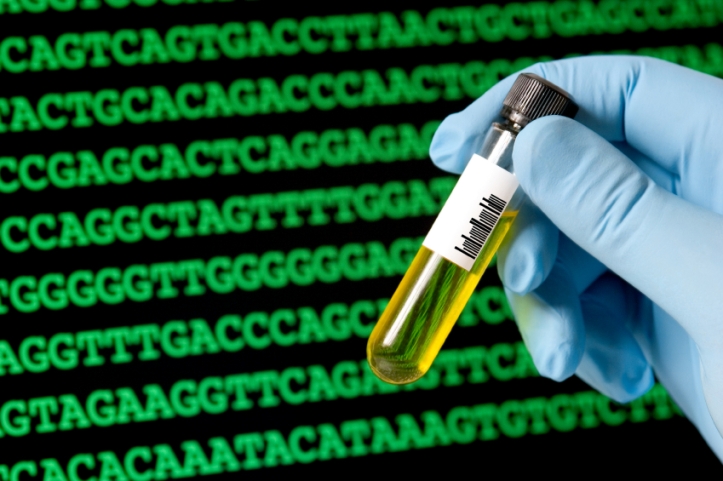Chromosome 14
MIR337: microRNA 337. ‘microRNAs (miRNAs) are short (20-24 nt) non-coding RNAs that are involved in post-transcriptional regulation of gene expression in multicellular organisms by affecting both the stability and translation of mRNAs’.
MIR665: microRNA 665. see MIR 337. microRNA 431. See MIR 337 for general information. Specific function doesn’t appear to be characterised.
DLK1: Delta-like 1 homolog. ‘This gene encodes a transmembrane protein containing six epidermal growth factor repeats. The protein is involved in the differentiation of several cell types, including adipocytes; it is also thought to be a tumor suppressor’. ‘A polymorphism within this gene has been associated with child and adolescent ‘. obesity.
RTL1: Retrotransposon-like 1. ‘This gene is a retrotransposon-derived, paternally expressed imprinted gene that is highly expressed at the late fetal stage in both the fetus and placenta. It has an overlapping maternally expressed antisense transcript, which contains several microRNAs targeting the transcripts of this gene through an RNA interference (RNAi) mechanism. This gene is essential for maintenance of the fetal capillaries’. Process: Multicellular organismal development. Component: Integral to membrane. Membrane.
MIR431: microRNA 431. See MIR 337 for general information. Specific function doesn’t appear to be characterised.
MIR493: microRNA 493. See MIR 337 for general information. Specific function doesn’t appear to be characterised.
MEG3: maternally expressed 3. ‘MEG3 is a maternally expressed imprinted gene which appears to function as an RNA molecule; multiple splice variants are observed in the available sequence data and a pituitary transcript variant has been associated with inhibited cell proliferation’. ‘The expression profile in mouse of the co-regulated Meg3/Gtl2 and Dlk1 genes suggests a causative role in the pathologies found in uniparental disomy animals, characterized by defects in skeletal muscle maturation, bone formation, placenta size and organization, and prenatal lethality’.
MIR770: microRNA 770. See MIR 337 for general information. Specific function doesn’t appear to be characterised.
Chromosome 21
DYRK1A: dual-specificity tyrosine-(Y)-phosphorylation regulated kinase 1A. ‘It may play a significant role in a signaling pathway regulating cell proliferation and may be involved in brain development. This gene is a homolog of Drosophila mnb (minibrain) gene and rat Dyrk gene. It is localized in the Down syndrome critical region of chromosome 21’. Function: ATP-binding. Non-membrane spanning protein tyrosine kinase activity. Nucleotide binding. Protein binding. Protein kinase activity. Protein self-assocation. Protein serine/threonine kinase activity. Protein tyrosine kinase activity. Transferase activity. Process: Nervous system development. Peptidyl-tyrosine phosphorylation. Peptidyl-tyrosine phosphorylation. Protein aminoa acid autophosphorylation. Protein amino acid phosphorylation. Component: Nuclear speck. Nucleus.
Thus the genes here are involved in foetal/neural development as well as cell differentiation all of which may have profound influences on physiology and anatomy although more information is needed for functional characterisation.
References
A Draft Sequence of the Neandertal Genome.Richard E. Green, Johannes Krause, Adrian W. Briggs, Tomislav Maricic, Udo Stenzel, Martin Kircher, Nick Patterson, Heng Li, Weiwei Zhai, Markus Hsi-Yang Fritz, Nancy F. Hansen, Eric Y. Durand, Anna-Sapfo Malaspinas, Jeffrey D. Jensen, Tomas Marques-Bonet, Can Alkan, Kay Prüfer, Matthias Meyer, Hernán A. Burbano, Jeffrey M. Good, Rigo Schultz, Ayinuer Aximu-Petri, Anne Butthof, Barbara Höber, Barbara Höffner, Madlen Siegemund, Antje Weihmann, Chad Nusbaum, Eric S. Lander, Carsten Russ, Nathaniel Novod, Jason Affourtit, Michael Egholm, Christine Verna, Pavao Rudan, Dejana Brajkovic, Zeljko Kucan, Ivan Gusic, Vladimir B. Doronichev, Liubov V. Golovanova, Carles Lalueza-Fox, Marco de la Rasilla, Javier Fortea, Antonio Rosas, Ralf W. Schmitz, Philip L. F. Johnson, Evan E. Eichler, Daniel Falush, Ewan Birney, James C. Mullikin, Montgomery Slatkin, Rasmus Nielsen, Janet Kelso, Michael Lachmann, David Reich,Svante Pääbo. Science 7 May 2010:Vol. 328. no. 5979, pp. 710 – 722.
Call for Authors: If you are interested in writing an article or series of articles for this blog please write to the e-mail address below. Copyright can be retained. Index: An index of the site can be found here. The page contains links to all of the articles in the blog in chronological order. Twitter: You can follow ‘The Amazing World of Psychiatry’ Twitter by clicking on this link. Podcast: You can listen to this post on Odiogo by clicking on this link (there may be a small delay between publishing of the blog article and the availability of the podcast). It is available for a limited period. TAWOP Channel: You can follow the TAWOP Channel on YouTube by clicking on this link. Responses: If you have any comments, you can leave them below or alternatively e-mail justinmarley17@yahoo.co.uk. Disclaimer: The comments made here represent the opinions of the author and do not represent the profession or any body/organisation. The comments made here are not meant as a source of medical advice and those seeking medical advice are advised to consult with their own doctor. The author is not responsible for the contents of any external sites that are linked to in this blog.

This article is more benefit for me. Hope you post more benefit article in the future. ++
LikeLike
[…] A Draft Sequence of the Neanderthal Genome: Review Part 5 […]
LikeLike
hi again
Sky
LikeLike
i didnt know that, is there another article like that? because i really wanna know more about it
LikeLike
[…] Foto Vía.: https://theamazingworldofpsychiatry.wordpress.com/2010/05/14/a-draft-sequence-of-the-neanderthal-geno… […]
LikeLike
[…] A Draft Sequence of the Neanderthal Genome: Review Part 5 […]
LikeLike
[…] A Draft Sequence of the Neanderthal Genome: Review Part 5 […]
LikeLike